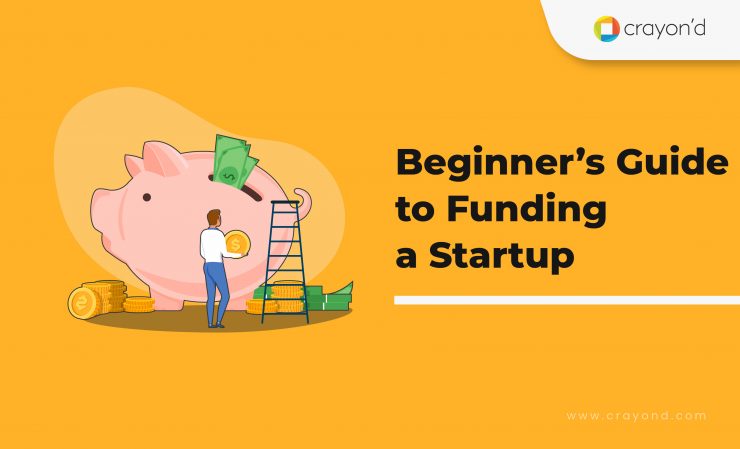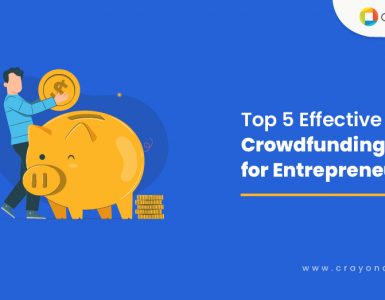Money plays a major role when you startup. You need it to keep the lights on and the momentum going. This can sometimes be a little excruciating because your vision might be extraordinary. But, you may not have the resources to pull it off. Most of the startups face this issue. The good news is, or just the news (if you are starting up, you probably would have known this) is that there are so many people out there who would be willing to fund your idea.
This blog is going to help you understand the different stages of startup funding.
- Pre-seed Funding
- Seed Capital
- Series A Funding Stage
- Series B Funding Stage
- Series C Funding Stage
- Series D Funding Stage and Beyond
- Initial Public Offering (IPO)

Pre-seed Funding
This is a stage where you haven’t even considered funding for your startup. It is the phase where you are bouncing ideas and operations. Investors are not likely to fund you during this phase. This is a tricky stage, which is independent of time. This phase is also called bootstrapping.
Here, you use your own resources such as time or money to scale the project. The business model is developed. Most entrepreneurs take up a second job to fund their idea. Also, because the idea is conceptual here, the funding required is pretty low.
During this stage, it is best to get guidance from entrepreneurs who have sailed the same boat. This will help you analyze the incurring costs for your project and develop a winning business model. You will get inputs on the do’s and don’ts that will help garner ideas on business growth.
It is important and necessary that entrepreneurs lookout and resolve issues on copyrights, or other legal issues that might arise later. Once the company is established, resolving such issues becomes a costly affair. This also stains your relationship with the investor.
Startup owners, Micro Venture Capitals, friends and family are the pre-seed investors. Kamal Hassan, the founding partner of Loyal Venturing capitals quotes “Ask people who know you already. Friends, past co-workers, family, etc. That is your best and almost only chance. Failing that ask people who are from the industry and have a lot of money. They might be able to recognize something at the pre-seed stage”
Seed Capital
Seed capital is the first stage of actual startup funding. In this stage, entrepreneurs look for sources that can fund their idea. Sources include crowdfunding, family and friends, loans from banks, etc. According to CBinsights, about 20% of the startups fail because they run out of the money that they need to run the show. The biggest mistake that most founders do is wait until they run out of all the cash that they have before looking for investors.

If you compare seed funding with the analogy of a tree, it is in the same stage as planting a seed. The seed needs a successful business strategy and dedication to flourish.

Here, the investors are running a huge risk. Because, not all businesses turn out to be successful. 90% of the startups fail, therefore investors often require high equity. The funds that you get in this stage should allow you to successfully launch your product and give you a ticket to enter the market. It should also allow you to initiate hiring and start early efforts in marketing your product.
If you are finding it difficult to get an investor, you can find seed accelerators like Techstars or 500 startups. They will help you pitch your solution to investors. It is important that you take time and do enough research to validate your idea before approaching an investor.
Series A Funding Stage
In this stage, you must learn how startup funding actually works. You should have a developed product with a considerable amount of paying customers who will give you the required MRR.
Starting a company requires a lot of support in terms of money and other resources. What Angel investor funding does is provide advice and consultations. They help startups mark their print. It is mostly done by an established entrepreneur who has retired yet has the zeal to run a business. They are a lieu of venture scrip and provide funds for the business. These type of investors take a high risk, therefore they look for ideas that will provide a high return on investment.
The 30-10-2 rule will help you find the correct investor. According to this rule, you must first find 30 investors who want to invest, out of that you need to pick 10 potential ones and then jot down to 2 who will pass on the funds to you.
In this stage, angel investors and traditional venture capital firms look for startups who have a solid strategy and the zeal to grow.
Series B Funding Stage
So, by now you should have a substantial customer base which has already streamlined your revenue. This is the key to prove to your investors that you are capable of achieving success on a large scale.
This promise brings investors to extend their horizons. They will fund you to do more market research, increase the team size and bring in more people who are qualified to help you in marketing, business development, and customer success. This helps your product meet the competition and carter to the needs of your customers.
This is similar to the previous stage, in terms of process, players etc. But the major change is the addition of venture capitalists who invest and guide you in a way that you can exceed expectations.
Series C Funding Stage
Only startups that are in their growth path will enter this stage of funding. For instance, let us assume that you have a product A that is already doing great and you have a steady flow of income coming from there. If you feel you can crack a new market with additional resources, series c funding is where you can achieve this.
They help you understand the market build new products and sometimes also acquire underperforming startups. In this stage, investors happily do their job as they are extremely satisfied and hopeful to receive a profit, swiftly.
Funding at this stage is less risky and therefore opens the doors to a lot of investors. Hedge funds, investment banks, equity firms will readily source your project. This is because you have already proved what you are capable of. Startups that engage in series C funding have an excellent customer base and are well-established.
Series D Funding Stage and Beyond
This is a stage where most companies would not require funding. But, if you see a potential and so not have enough money to go with the deal, you can always find an investor who will be able to help you with this. This is the stage where you raise funds for a particular situation such as a merger.
This stage of funding also helps startups that has got stage C funding but still need more funds to keep afloat.
Initial Public Offering (IPO)
Initial Public Offering (IPO) is where startups are so successful that they offer shares to the public. This helps growing startups, who need funds to generate money.

Established companies use this to allow owners to sell their ownership to the public. When a startup goes public, the following should be done.
- An external public offering team should be formed. This comprises of lawyers, underwriters, and public accountants.
- A piece of detailed information on the current financial position and the projected expense and operations should be compiled.
- An audit of the financial statements should be done, this gives the opinion on going public.
- The prospectus should be filed and the date of going live should be announced.
This brings us to the next question, which is a big one – why?
Entrepreneurs going public can generate additional funds via secondary offerings. This is because they already have access to the public market. Many public organizations use this to attract talents to their organization. Because their stocks are public, it is easy to sell them. Offering these stocks to employees attract them to the organization. It also helps in improving brand visibility and takes you closer to your potential users.
Bottom line
Wanting to start up is great. All that you need is a great idea and a proper development team that will help you deliver your idea. Because the product and the idea there is nothing to sell nor invest.
Your investors at the initial stages trust your idea and believe that your product will be great. If you are someone with a great business idea and looking at developing your product, head over to Crayond. We will take off your idea from there.







Add comment